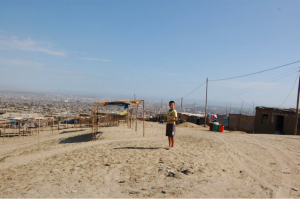As medical students across America graduated this past May, receiving the prized M.D. they worked so hard to obtain, many have their minds squarely focused on one thing — intern year. Some students have only a few weeks off until what is often considered the most exhausting, overwhelming and infamous year in all of medical training. But what I learned on a recent trip to South America has caused me to re-evaluate the American intern year all together. Maybe intern year in the U.S. really isn’t so bad? Maybe our model for the first year of graduate medical education is backward?

Image credit: Benjamin Ostrander
Recently, I was in Medellín, Colombia, drinking locally grown coffee and discussing the differences in medical education with an old friend who is now a medical student there. “Intern year” in some parts of South America is an entirely different animal — fresh graduates are shipped off to the most remote corners of their native country, from tiny Andean villages to sparsely populated and densely forested regions in the Amazon, where they serve a mandatory one-year post as the primary health care provider for the people of that district.
I understand that the American academic hospital system has its challenges, especially as an intern, but I cannot imagine being sent as a fresh medical graduate to a small, rural outpost, sometimes without internet access and with scarce resources, to serve as the lone health care provider. Yet over 70 countries worldwide have some form of compulsory service after graduating from medical school.
The benefits to this model are numerous. New doctors are put in a position where they are forced to test their knowledge, act, learn and heal. Under such pressure and with only themselves to depend on, most learn a tremendous amount about foundational medicine. In this way, every doctor is initially trained as a primary care physician regardless of future plans to specialize. Furthermore, this is a way for developing countries to provide inexpensive health care to rural, often impoverished citizens, when the alternative might be no health care at all.
This left me wondering whether such a model could work in the U.S., where the shortage of primary care providers continues to rise. While it is probably unrealistic to require every new doctor in America to serve a mandatory year of rural service, there are ways we can emulate the more useful aspects of the service year, such as offering and incentivizing more rotations in rural or underserved communities. Trainees could also be placed in clinical settings where they have more responsibility; at major tertiary academic medical centers like Johns Hopkins, where there is an entire team for every minute aspect of care, trainees often get less practice and have less responsibility than a new Colombian doctor would.
In the end, if the American health care and medical education systems are to continually evolve and innovate, we need to look not only to our own experts but to the models and systems used globally. There is much to learn from our neighbors.
Related Content
Primary Care 101
Clerkship brings Johns Hopkins medical students face to face with patients and community doctors. Read more.
A Primary Need
Why medical school students must be included in efforts to solve our primary care shortage. Read more in HopkinsMedicine magazine.
Addressing the Shift in Primary Care
Read more insights from Paul Rothman, Dean of the Medical Faculty and CEO of Johns Hopkins Medicine magazine.